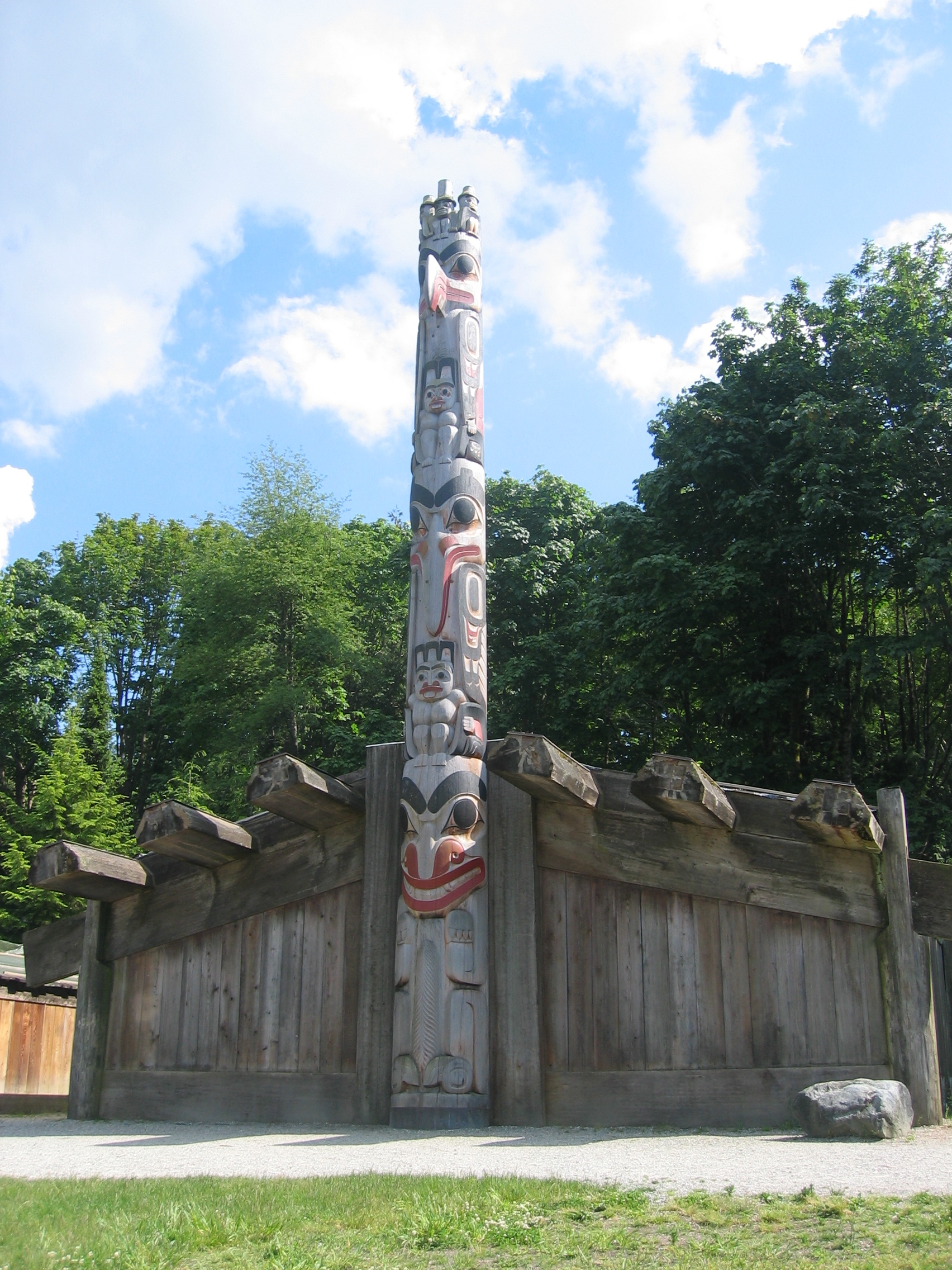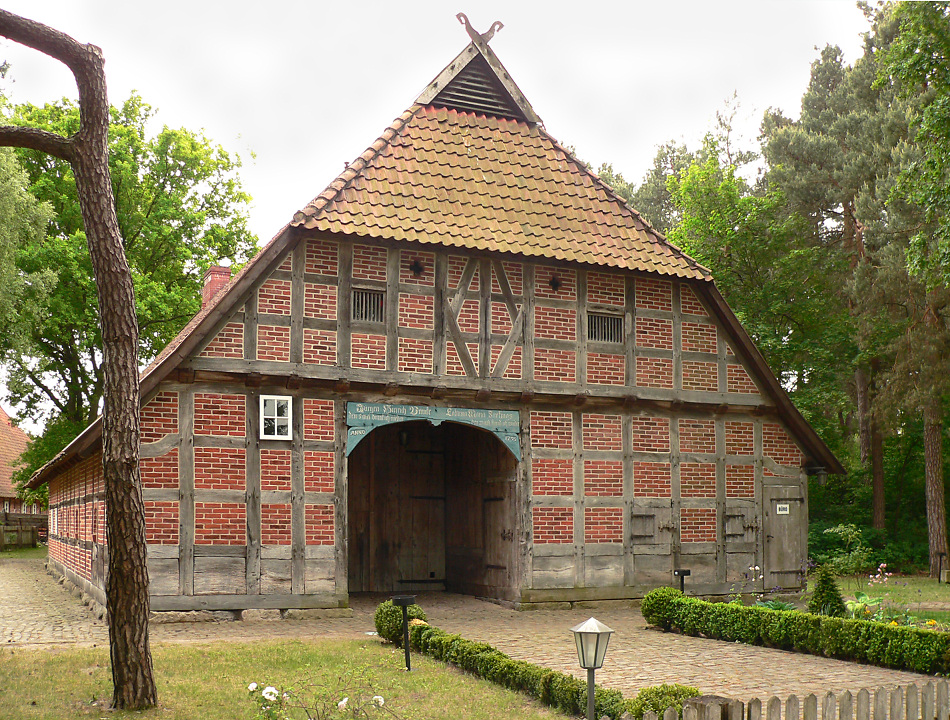|
Longhouse
A longhouse or long house is a type of long, proportionately narrow, single-room building for communal dwelling. It has been built in various parts of the world including Asia, Europe, and North America. Many were built from lumber, timber and often represent the earliest form of permanent structure in many cultures. Types include the Neolithic long house of Europe, the Norman Medieval Longhouses that evolved in Western Britain (''Tŷ Hir'') and Northern France (''Longère''), and the Longhouses of the indigenous peoples of North America, various types of longhouse built by different cultures among the indigenous peoples of the Americas. Europe The Neolithic long house type was introduced with the first farmers of Central Europe, Central and Western Europe around 5000 BCE, 7,000 years ago. These were farming settlements built in groups of six to twelve longhouses; they were home to large extended families and kin. The Germanic cattle-farmer longhouses emerged along the southw ... [...More Info...] [...Related Items...] OR: [Wikipedia] [Google] [Baidu] |
Dartmoor Longhouse
The Dartmoor longhouse is a type of traditional stone-built home, typically found on the high ground of Dartmoor, in Devon, England and belonging to a wider tradition of combining human residences with those of livestock (cattle or sheep) under a single roof specific to western Britain; Wales, Cornwall and Devon, where they are more usually referred to simply as longhouses and in general housebarns. History The earliest are thought to have been built in the 13th century, and they continued to be constructed throughout the mediaeval period and into the Early Modern, using local granite or other stone. One particular longhouse near Carreg Cennen Castle in Wales is dated to the 11th century. Many longhouses are still inhabited today (although adapted over the centuries), while others have been converted into farm buildings. Forms of longhouses identical to those on Dartmoor are found in Cornwall, particularly on Bodmin Moor and in Wales where they are commonly called ''tyddyn'' ... [...More Info...] [...Related Items...] OR: [Wikipedia] [Google] [Baidu] |
Mead Hall
Among the early Germanic peoples, a mead hall or feasting hall was a large building with a single room intended to receive guests and serve as a center of community social life. From the fifth century to the Early Middle Ages such a building was the residence of a lord or king and his retainers. These structures were also where lords could formally receive visitors and where the community would gather to socialize, allowing lords to oversee the social activity of their subjects. Etymology The old name of such halls may have been ''sal/salr'' and thus be present in old place names such as "Uppsala". The meaning has been preserved in German ''Saal'', Dutch ''zaal'', Frisian ''seal'', Icelandic ''salur'' , Swedish, Norwegian and Danish ''sal'', Lithuanian ''salė'', Finnish ''sali'', Estonian ''saal'', Izhorian ''saali'', Hungarian ''szállás'', French ''salle'', Italian/Polish/ Portuguese/Spanish/Serbo-Croatian ''sala'' and Russian ''зал'' (zal), (all meaning "hall" or "large ro ... [...More Info...] [...Related Items...] OR: [Wikipedia] [Google] [Baidu] |
Low German House
The Low German house or ''Fachhallenhaus'' is a type of timber-framed farmhouse found in northern Germany and the easternmost Netherlands, which combines living quarters, byre and barn under one roof. It is built as a large hall with bays on the sides for livestock and storage and with the living accommodation at one end. The Low German house appeared during the 13th to 15th centuries and was referred to as the Low Saxon house (''Niedersachsenhaus'') in early research works. Until its decline in the 19th century, this rural, agricultural farmhouse style was widely distributed through the North German Plain, all the way from the Lower Rhine to Mecklenburg. Even today, the ''Fachhallenhaus'' still characterises the appearance of many north German villages. Name The German name, ''Fachhallenhaus'', is a regional variation of the term ''Hallenhaus'' (" hall house", sometimes qualified as the "Low Saxon hall house"). In the academic definition of this type of house the word ''F ... [...More Info...] [...Related Items...] OR: [Wikipedia] [Google] [Baidu] |
Vikings
Vikings were seafaring people originally from Scandinavia (present-day Denmark, Norway, and Sweden), who from the late 8th to the late 11th centuries raided, pirated, traded, and settled throughout parts of Europe.Roesdahl, pp. 9–22. They also voyaged as far as the Mediterranean Sea, Mediterranean, North Africa, the Middle East, Greenland, and Vinland (present-day Newfoundland in Canada, North America). In their countries of origin, and some of the countries they raided and settled in, this period is popularly known as the Viking Age, and the term "Viking" also commonly includes the inhabitants of the Scandinavian homelands as a whole. The Vikings had a profound impact on the Early Middle Ages, early medieval history of Northern Europe, northern and Eastern Europe, including the political and social development of England (and the English language) and parts of France, and established the embryo of Russia in Kievan Rus'. Expert sailors and navigators of their cha ... [...More Info...] [...Related Items...] OR: [Wikipedia] [Google] [Baidu] |
Devon
Devon ( ; historically also known as Devonshire , ) is a ceremonial county in South West England. It is bordered by the Bristol Channel to the north, Somerset and Dorset to the east, the English Channel to the south, and Cornwall to the west. The city of Plymouth is the largest settlement, and the city of Exeter is the county town. The county has an area of and a population of 1,194,166. The largest settlements after Plymouth (264,695) are the city of Exeter (130,709) and the Seaside resort, seaside resorts of Torquay and Paignton, which have a combined population of 115,410. They all are located along the south coast, which is the most populous part of the county; Barnstaple (31,275) and Tiverton, Devon, Tiverton (22,291) are the largest towns in the north and centre respectively. For local government purposes Devon comprises a non-metropolitan county, with eight districts, and the Unitary authorities of England, unitary authority areas of Plymouth City Council, Plymouth an ... [...More Info...] [...Related Items...] OR: [Wikipedia] [Google] [Baidu] |
Neolithic Long House
The Neolithic long house was a long, narrow timber dwelling built by the Old Europeans in Europe beginning at least as early as the period 6000 to 5000 BC. They first appeared in central Europe in connection with the early Neolithic cultures such as the Linear Pottery culture or Cucuteni culture. This type of architecture represents the largest free-standing structure in the world in its era. Long houses are present across numerous regions and time periods in the archaeological record. The long house was a rectangular structure, wide, of variable length, around up to . Outer walls were wattle and daub, sometimes alternating with split logs, with pitched, thatched roofs, supported by rows of poles, three across.The numbers are from Gimbutas (1991) pages 39–41. However, they are approximately the same as the numbers given by other researchers and can therefore be taken as true measurements within a tolerance. The exterior walls would have been quite short beneath the large r ... [...More Info...] [...Related Items...] OR: [Wikipedia] [Google] [Baidu] |
Longère
A ''longère'' is a type of longhouse typical of the regions of Brittany and Normandy in northwestern France. It is a long, narrow dwelling, developing along the axis of its peak, typically inhabited by farmers and artisans. ''Longère'' also means a "long wall" or "gutter wall" of a building, whether for a church or house, in Lower Brittany. See also * Quistinic * Manoir de Mézarnou * Moulin d'Olivet References House types Buildings and structures in Normandy Buildings and structures in Brittany {{architecture-stub ... [...More Info...] [...Related Items...] OR: [Wikipedia] [Google] [Baidu] |
Blackhouse
A blackhouse ( ; ) is a traditional type of house which used to be common in Ireland, the Hebrides, and the Scottish Highlands. Origin of the name The origin of the name blackhouse is of some debate. On the Isle of Lewis, in particular, it seems to have been used to distinguish the older blackhouses from some of the newer white-houses ( , ; ), with their harled (rendered) stone walls. There may also be some confusion arising from the phonetic similarity between the dubh, meaning black, and tughadh, meaning thatch. Description The buildings were generally built with double wall dry-stone walls packed with earth, and were roofed with wooden rafters covered with a thatch of turf with cereal straw or reed. The floor was generally flagstones or packed earth and there was a central hearth for the fire. There was no chimney for the smoke to escape through. Instead the smoke made its way through the roof. This led to the soot blackening of the interior which may also have co ... [...More Info...] [...Related Items...] OR: [Wikipedia] [Google] [Baidu] |
Cornwall
Cornwall (; or ) is a Ceremonial counties of England, ceremonial county in South West England. It is also one of the Celtic nations and the homeland of the Cornish people. The county is bordered by the Atlantic Ocean to the north and west, Devon to the east, and the English Channel to the south. The largest urban area is the Redruth and Camborne conurbation. The county is predominantly rural, with an area of and population of 568,210. After the Redruth-Camborne conurbation, the largest settlements are Falmouth, Cornwall, Falmouth, Penzance, Newquay, St Austell, and Truro. For Local government in England, local government purposes most of Cornwall is a Unitary authorities of England, unitary authority area, with the Isles of Scilly governed by a Council of the Isles of Scilly, unique local authority. The Cornish nationalism, Cornish nationalist movement disputes the constitutional status of Cornwall and seeks greater autonomy within the United Kingdom. Cornwall is the weste ... [...More Info...] [...Related Items...] OR: [Wikipedia] [Google] [Baidu] |
Wales
Wales ( ) is a Countries of the United Kingdom, country that is part of the United Kingdom. It is bordered by the Irish Sea to the north and west, England to the England–Wales border, east, the Bristol Channel to the south, and the Celtic Sea to the south-west. , it had a population of 3.2 million. It has a total area of and over of Coastline of Wales, coastline. It is largely mountainous with its higher peaks in the north and central areas, including Snowdon (), its highest summit. The country lies within the Temperate climate, north temperate zone and has a changeable, Oceanic climate, maritime climate. Its capital and largest city is Cardiff. A distinct Culture of Wales, Welsh culture emerged among the Celtic Britons after the End of Roman rule in Britain, Roman withdrawal from Britain in the 5th century, and Wales was briefly united under Gruffudd ap Llywelyn in 1055. After over 200 years of war, the Conquest of Wales by Edward I, conquest of Wales by King Edward I o ... [...More Info...] [...Related Items...] OR: [Wikipedia] [Google] [Baidu] |





